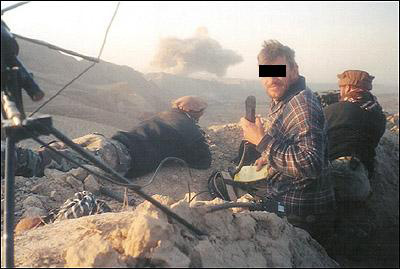The words “quiet professionals” have been used to describe the men of Air Force Special Operations Command since their inception. AFSOC has bred some of the most effective combat assets on the battlefield and have fought alongside the world’s most elite units in every major battle in our nation’s history since the Vietnam War. The operators of AFSOC include combat controllers (CCT), pararescuemen (PJ), and combat weathermen.

Combat controllers are the foremost experts on “combat” air-traffic control and joint tactical air control in the Air Force, and are some of the military’s most highly trained assets. Their training includes the Combat-Control Operator Course, U.S. Army Airborne School, U.S. Air Force Basic Survival School, Combat-Control School, U.S. Army Military Free Fall Parachutist School, U.S. Army Special Forces Combat Diver School, U.S. Navy Underwater Egress Training, and a laundry list of advanced training courses once these operators reach the team level, to include CQB and shooting schools, advanced driving courses, and their joint tactical air-control certifications.
Combat controllers are a force multiplier on the battlefield; they seek out and destroy evil with extreme prejudice, delivering precision air strikes, airfield seizures, and resupply airdrops alongside Army Green Berets, Rangers, Navy SEALs, Marine Force Recon, and many other host nation special operations forces.

Pararescue jumpers (PJs) are also highly-trained members of the AFSOC community, only they have a slightly different skillset. Being the more recognizable members of Air Force Special Operations, PJs are known as the life-saving heroes who rescue downed pilots and other military personnel in austere and hostile territories.
The training for pararescuemen is the same as the pipeline for combat controllers with the exception of the air-traffic control and joint tactical air-control portion, which are replaced with the paramedic course and Pararescue Recovery Specialist course. Pararescuemen put their own safety aside while doing everything in their power and training to ensure that no injured man or woman is left behind. They live by the motto, “These things we do, that others may live.”

The words “quiet professionals” have been used to describe the men of Air Force Special Operations Command since their inception. AFSOC has bred some of the most effective combat assets on the battlefield and have fought alongside the world’s most elite units in every major battle in our nation’s history since the Vietnam War. The operators of AFSOC include combat controllers (CCT), pararescuemen (PJ), and combat weathermen.

Combat controllers are the foremost experts on “combat” air-traffic control and joint tactical air control in the Air Force, and are some of the military’s most highly trained assets. Their training includes the Combat-Control Operator Course, U.S. Army Airborne School, U.S. Air Force Basic Survival School, Combat-Control School, U.S. Army Military Free Fall Parachutist School, U.S. Army Special Forces Combat Diver School, U.S. Navy Underwater Egress Training, and a laundry list of advanced training courses once these operators reach the team level, to include CQB and shooting schools, advanced driving courses, and their joint tactical air-control certifications.
Combat controllers are a force multiplier on the battlefield; they seek out and destroy evil with extreme prejudice, delivering precision air strikes, airfield seizures, and resupply airdrops alongside Army Green Berets, Rangers, Navy SEALs, Marine Force Recon, and many other host nation special operations forces.

Pararescue jumpers (PJs) are also highly-trained members of the AFSOC community, only they have a slightly different skillset. Being the more recognizable members of Air Force Special Operations, PJs are known as the life-saving heroes who rescue downed pilots and other military personnel in austere and hostile territories.
The training for pararescuemen is the same as the pipeline for combat controllers with the exception of the air-traffic control and joint tactical air-control portion, which are replaced with the paramedic course and Pararescue Recovery Specialist course. Pararescuemen put their own safety aside while doing everything in their power and training to ensure that no injured man or woman is left behind. They live by the motto, “These things we do, that others may live.”

Special Operations Weathermen (SOWT) conduct operations directly with other special operations forces, providing weather data to operations in real time to maximize the potential for a successful mission. They also provide terrain and riverine data that could make or break the success of a special operations combat operation in forward-deployed locations. Special operations weathermen go through many of the same training events as the other Air Force special operations airmen with the addition of their primary weather training to make them experts on meteorological phenomenon and weather prediction.

A “quiet professional” is an operator that does his job without the want or need for recognition, only dedication to the destruction of our enemies. I have had the privilege to fight alongside these men during my career as a combat controller and have experienced the acts of selfless heroism first hand. The men of Air Force Special Operations Command take the notion of the quiet professional to the next level by selflessly sacrificing everything that they have, occasionally even their lives, to prosecuting the enemies of the United States.
(Images Courtesy: Media.DMA.MIL)



























COMMENTS
There are on this article.
You must become a subscriber or login to view or post comments on this article.